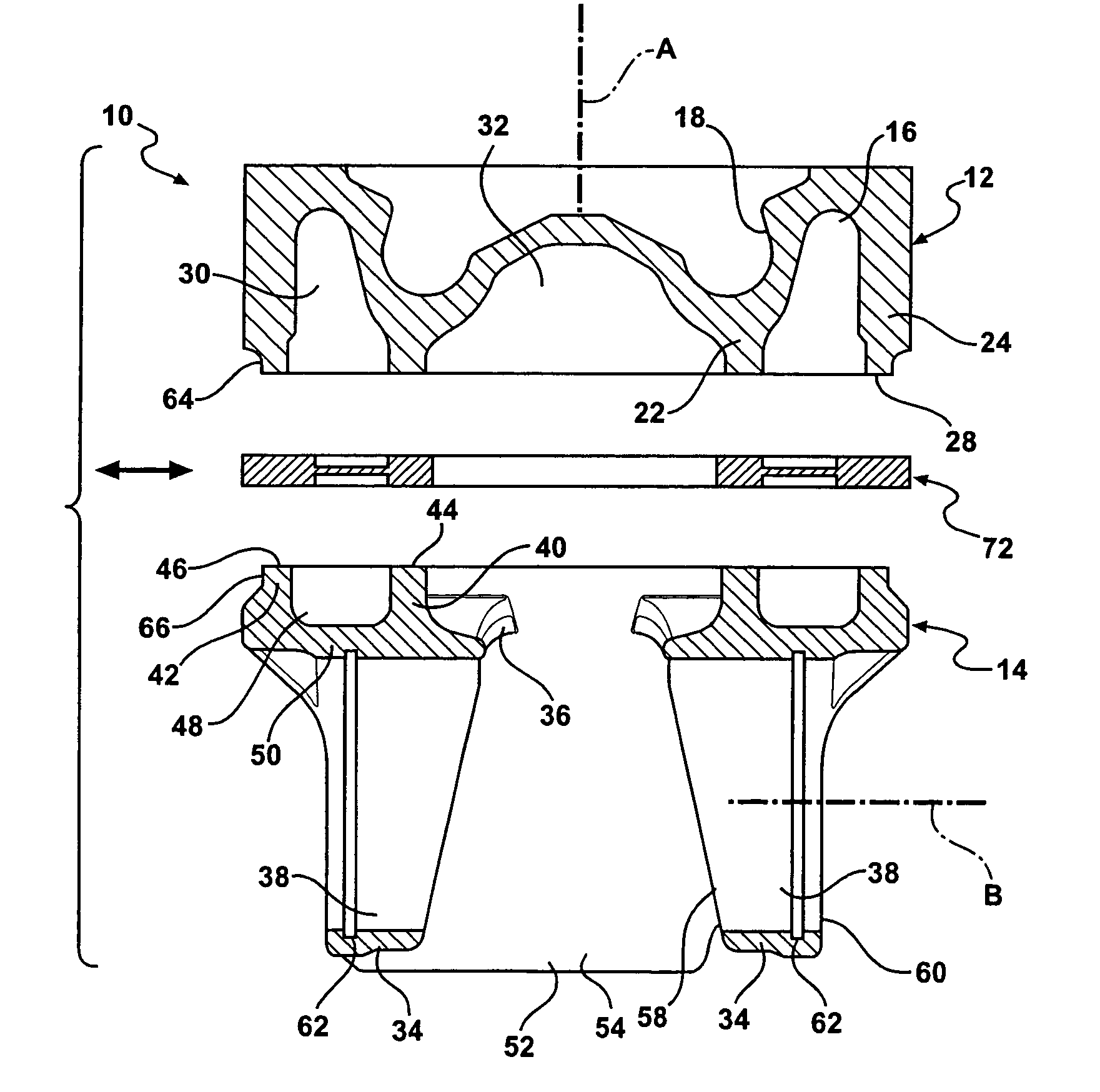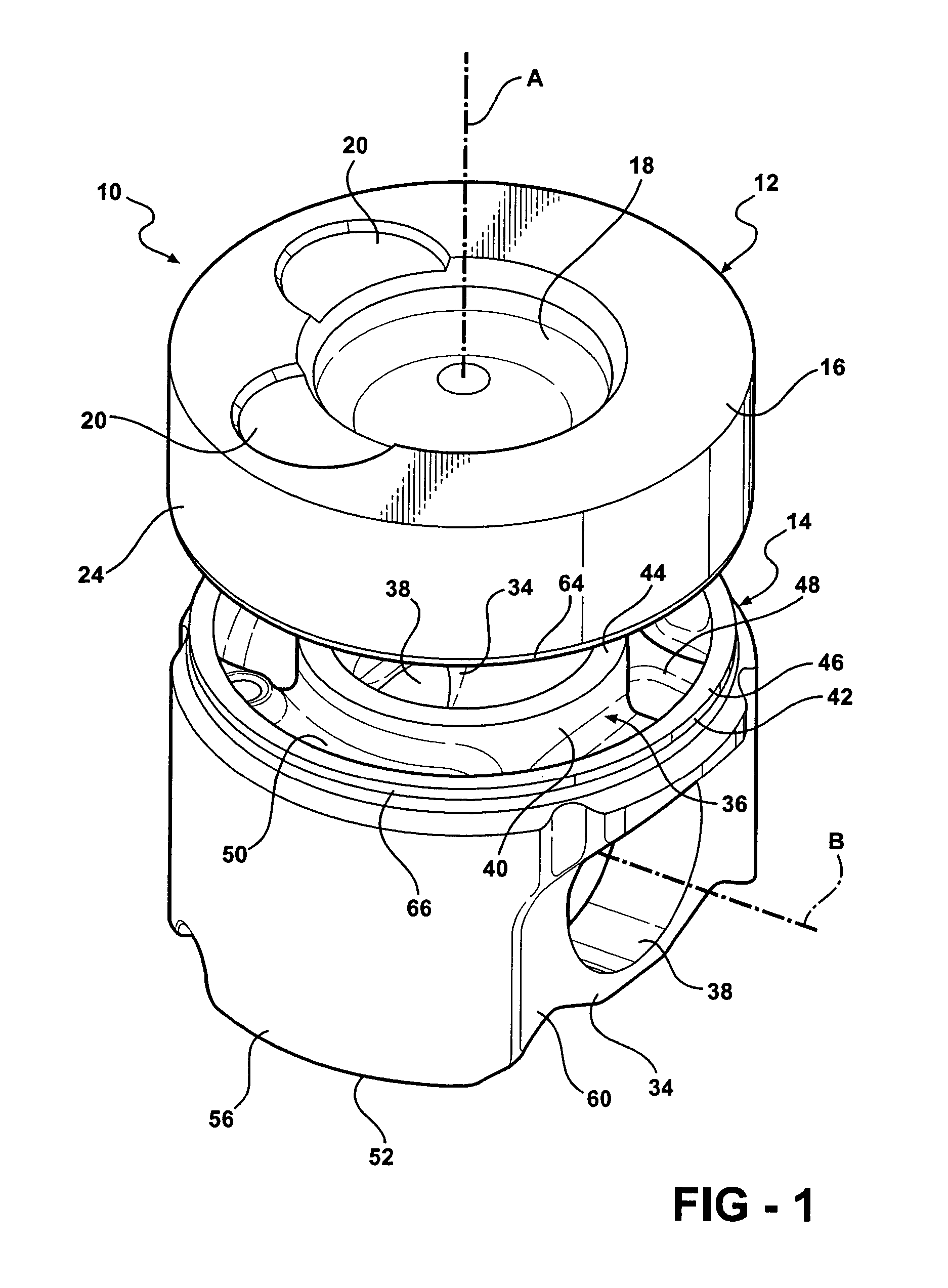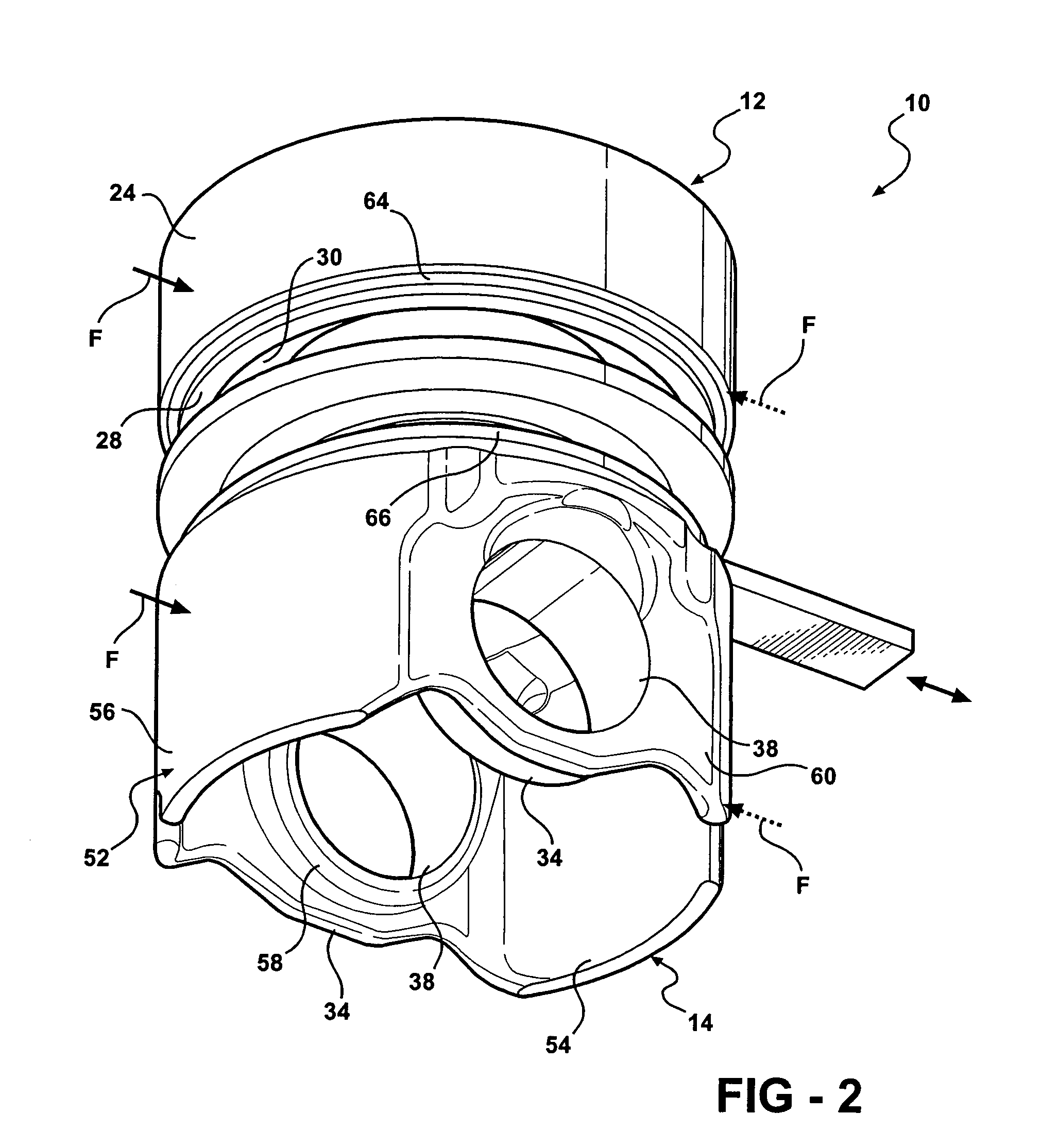Piston and method of manufacture
a technology of piston and manufacturing method, applied in the direction of manufacturing tools, soldering apparatus, electric/magnetic/electromagnetic heating, etc., can solve the problems of not being used, and achieve the effects of high integrity, low cost, and precise, uniform and controlled heating of surfaces
- Summary
- Abstract
- Description
- Claims
- Application Information
AI Technical Summary
Benefits of technology
Problems solved by technology
Method used
Image
Examples
Embodiment Construction
[0026]A piston constructed according to a presently preferred embodiment of the invention is shown generally at 10 in the drawings and is fabricated of at least two parts which are formed separately from one another in a manner to provide at least one and preferably at least two sets of circumferentially extending mateable joining surfaces which are initially spaced apart from one another and heated to a temperature sufficient for welding the parts, after which the heating of the surfaces is terminated and the surfaces joined to one another to effect a permanent weld between the parts.
[0027]In the illustrated embodiment, the piston 10 includes a first part 12 and a second part 14. Both parts 12, 14 are fabricated of metal, and preferably steel alloys, although the invention is not limited to these materials. The first and second parts may be cast, forged, fabricated of powder metal or any other process for making metal parts. The alloys used for the first and second parts 12, 14 may...
PUM
| Property | Measurement | Unit |
|---|---|---|
| bonding temperature | aaaaa | aaaaa |
| temperature | aaaaa | aaaaa |
| thickness | aaaaa | aaaaa |
Abstract
Description
Claims
Application Information
 Login to View More
Login to View More - R&D
- Intellectual Property
- Life Sciences
- Materials
- Tech Scout
- Unparalleled Data Quality
- Higher Quality Content
- 60% Fewer Hallucinations
Browse by: Latest US Patents, China's latest patents, Technical Efficacy Thesaurus, Application Domain, Technology Topic, Popular Technical Reports.
© 2025 PatSnap. All rights reserved.Legal|Privacy policy|Modern Slavery Act Transparency Statement|Sitemap|About US| Contact US: help@patsnap.com



